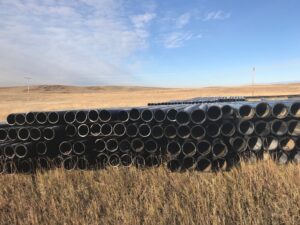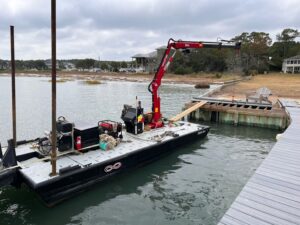Today, creating safe drinking water systems is a critical global challenge. Obstacles such as environmental pollution, aging infrastructure, and material degradation stand in the way of achieving this goal. The solution to this problem can be found in HDPE water pipe. It is increasingly being considered the best alternative to traditional pipe materials. Below, we will look in detail at how applications of HDPE pipe contribute to the creation of safer drinking water supply systems.
HDPE Water Pipe vs. Traditional and Other Plastic Pipes
Historically, metal pipes have been the standard for water systems, but their susceptibility to corrosion and sediment accumulation has prompted the search for better alternatives. PEX are known for its use in radiant heating systems and increasing popularity for potable water. They still faces limitations such as size constraints for commercial projects and environmental concerns due to its non-recyclable nature and potential for chemical leaching.
HDPE pipes have become a better choice for both potable and non-potable water applications due to their robustness, flexibility, and environmental safety. HDPE’s welded joints provide a seamless connection, significantly reducing the risk of leaks and contaminant entry.
Advantages of HDPE Water Pipe
Corrosion Resistance: HDPE pipes are immune to rust and corrosion. This means that there is no degradation that could lead to leaks or contamination of the water supply.
Chemical Stability: HDPE exhibits superior resistance to a broad range of chemicals. This stability prevents contaminants from permeating the pipe, particularly important in areas with contaminated soil or groundwater.
Flexibility and Durability: HDPE pipes can handle more rigorous site conditions and are less likely to break under pressure or due to environmental factors. Their flexibility allows for bending around obstacles without the need for additional joints, reducing potential failure points.
Environmental Impact: HDPE pipes are made from recyclable materials and are themselves fully recyclable at the end of their lifecycle, contributing to a circular economy. Their production and disposal have a lower environmental impact compared to traditional and other plastic pipes.
Safety and Regulatory Approvals
HDPE’s safety for transporting drinking water has been validated by various standards organizations and regulatory bodies. It is approved for potable cold water applications and increasingly for hot water systems in certain formulations. In Europe, high-temperature resistant HDPE is widely used, and similar advancements are being adopted in the United States.
Current Research and Findings
Recent studies have explored the potential for chemical migration from HDPE water pipe into water systems. While some contaminants can migrate, they typically diminish to safe levels quickly. For high-risk applications further tests and certifications can ensure that specific HDPE products meet the stringent requirements for water safety.
Takeaway:
With HDPE material it is possible to create safer and more reliable drinking water systems. The resistance of HDPE water pipe to environmental stressors positions these type of pipes as an excellent choice for modern water infrastructure projects. As technology progresses, the distinctions between HDPE and other materials become increasingly clear, underscoring HDPE’s role in providing clean, safe drinking water now and into the future.
If you are looking for high-quality solutions for the production of plastic pipelines adapted to the requirements of your specific environment, then contact Legacy HDPE. We focus on quality and customer satisfaction, ensuring the durability, efficiency, and cost-effectiveness of your plumbing infrastructure. For more information about our products and services, please contact us directly. Tel: 307-299-3049







